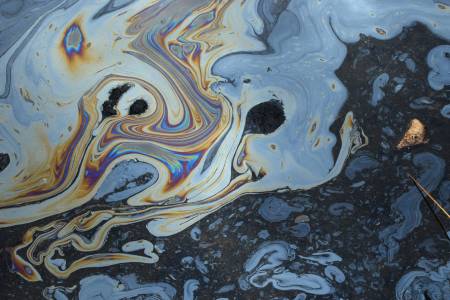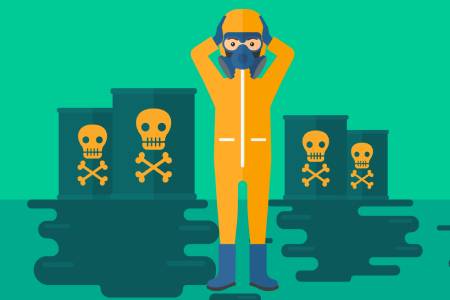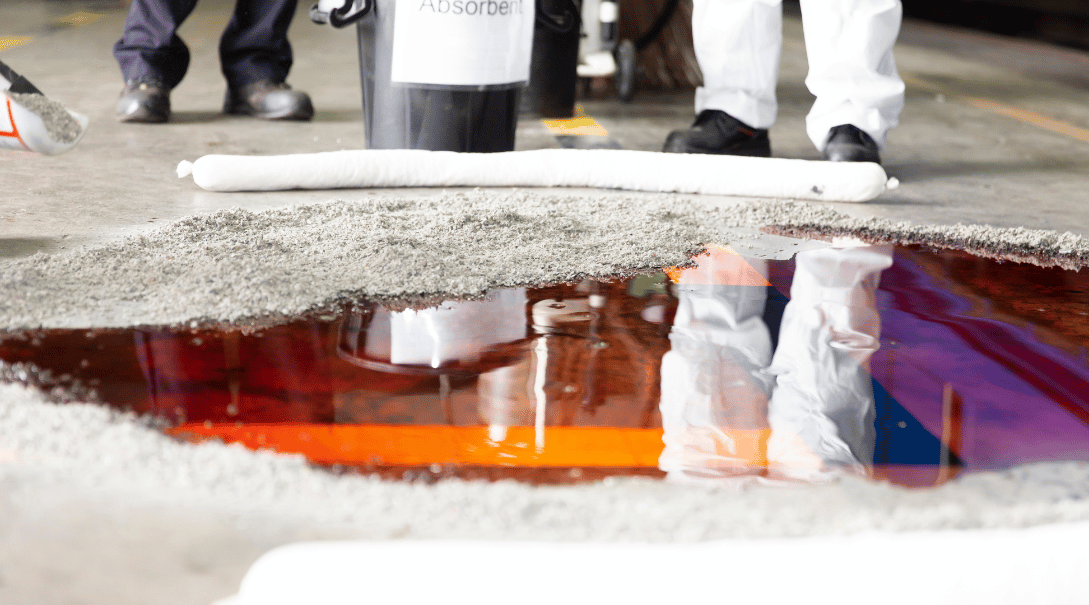Like most people, you probably picture a toxic chemical spill as involving an overturned tractor-trailer with thousands of gallons of dangerous chemicals filling the streets ( or like the recent event in Ohio). However, a toxic spill is not necessarily a dramatic-looking event. Simply knocking over a test tube in a lab can qualify.
To prevent harm to humans, animals, and the environment, every release of toxic substances must be followed by a safe and thorough clean-up process. AOTC handles toxic spills and offers guidance about federal regulations so you can be sure the spill is dealt with properly.
Table of Contents
Definition of Toxic Spills
Toxic spills are defined as the accidental release of hazardous substances that can kill, injure, or otherwise harm human, animal, and plant life. Some types of toxic spills are:
Toxic Waste Spill
These spills involve discarded materials containing corrosive, ignitable, reactive, or toxic chemicals or compounds. Items that fall under this category include discarded batteries, pesticides, and lead or mercury products.
Toxic Oil Spill
In addition to being flammable, petroleum products such as gasoline, diesel, and oil are poisonous to most animal and plant life. They can spread and leak into the ground, water, and air.
Toxic Water Spill
Wastewater might not seem like a particularly worrisome liquid, but it can contain lead, mercury, arsenic, and other dangerous compounds. In 2015, the U.S. Environmental Protection Agency released millions of gallons of toxic wastewater by accident, allowing it to flow into the Colorado River.
Toxic Chemical Spill
This type of spill involves the release of hazardous liquids, solids, and gasses. It’s the most commonly used phrase, encompassing all dangerous substance spills.
The causes for these spills vary but can include:
- Natural disasters
- Human error (e.g., improper disposal)
- Transportation accidents
- Equipment failure
Most spills are accidents, but so-called “toxic terrorists” have been known to use chemical and biological weapons to cause harm and spread fear. The results of attacks with such weapons would certainly qualify as a toxic spill, depending on the weapons used.
Environmental Impact of Toxic Spills
How do industrial toxic spills harm the environment? These dangerous, spilled materials can contaminate air, soil, and drinking water. If not cleaned swiftly and correctly, such toxic substances can remain in the environment for years, decades, or centuries, causing local wildlife and vegetation to die off en masse.
Safety Measures Before Cleaning Up a Toxic Spill
How do you clean up a toxic waste spill?
The first point to remember is that even though toxic spill clean-up is essential for containing hazardous chemicals, individuals near the spill must take care of their own well-being first.
Identify the Substance

Evacuate the Area
Once you’ve determined that the spill is a risk due to toxicity, corrosivity, or flammability, evacuate all non-hazmat personnel from the location. Ensure the substance cannot spread by confining it to as small an area as possible.
Wear Protective Equipment
Never touch or handle toxic substances without proper personal protective equipment (PPE). Use gloves, respirators, goggles, and full-body coverings to avoid direct contact or accidental inhalation.
Avoid Igniting the Substance
If the substance is flammable, ensure there are no possible ignition sources nearby. Identify and remove or extinguish any sparks or open flames. If the spill occurred indoors, you might have to shut off power to the affected section of the facility.
Call Emergency Services
Contact emergency services if you’re unsure how to safely dispose of a spill yourself. Fire departments and hazmat teams are qualified to handle cleanups of dangerous spills. They can either assist or perform the cleanup themselves.
Otherwise, one of the top emergency response companies, like AOTC, will assist.
Tips for Preventing Toxic Spills
Safe handling of dangerous materials ensures that they never enter the environment. Thanks to several high-profile toxic spills in the United States, the public is aware of the danger that mishandling can cause.
For example, consider the BP Deepwater Horizon oil spill of 2010.
While it’s primarily remembered as a toxic spill in Florida thanks to media coverage of Florida’s beaches having tar mats and balls washing ashore, the spill affected the entire Gulf of Mexico. Over 1,000 miles of shoreline experienced oiling, with Louisiana bearing the brunt of the contamination.
Causes for the spill were manifold and ranged from poorly laid cement, a valve failure, misread pressures, a non-functioning gas alarm, and the absence of a battery in the blowout preventer.
While the 2010 BP oil spill may be an extreme example, smaller-scale spills still occur due to similar failures.
Store Toxic Substances Properly
Keep dangerous materials in containers designed to hold them. Store the containers in well-ventilated areas that you can seal off if necessary. If the chemicals happen to be released, you then have an ideal space to contain the spill and clean it up.
Label Containers Clearly

If you have a facility with non-English speaking employees, ensure the labels feature messaging in their native languages. Include the name of the material, the date of storage, and the kind of hazards the material can cause.
Use Secondary Containment
To add redundancy to your containment efforts, use spill trays and pallets to catch any leaks or spills before they have a chance to hit the ground. Avoid storing chemicals near drains or other pathways the substances could take out into the outside environment.
Regularly Inspect Storage Areas
Never assume that dangerous chemicals are still in proper containment! You should perform regular inspections to identify and correct possible issues, such as container cracks or failing lid seals.
Train Employees
Every employee needs proper training on handling procedures for the specific hazardous materials you have in storage. They need to know what to do should they be called upon to respond to a spill.
When to Contact AOTC for Toxic Spill Clean-Up
When you need toxic spill cleanup, AOTC’s 24-Hour Emergency Spill Response is ready to respond around the clock. AOTC offers environmental consulting services as well.
We can ensure that dangerous substances are contained and disposed of to the highest standards. Contact AOTC to take action.
